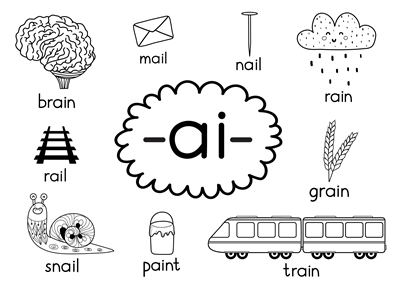New study shows teaching reading using phonics is `failing children`

You may have heard quite a lot about `phonics` over the last decade. If you have a child in early years foundation stage (EYFS) or primary school you certainly will have come across them. But what exactly are phonics? And how do they relate to children`s education?
Teaching with phonics, or `synthetic phonics` is a pedagogy where a special emphases is put upon building a connection between letters and sounds. Most phonics programmes begin by showing a child a letter, and then teaching them to enunciate the sound it represents. Conventionally children are taught the letters S, A, T, P, I, N first, a selection so chosen because it permits the creation of a maximal number of words with these finite blocks (for example pat, tip and sat).
Children are then taught to `blend` the sounds in order to create words, their lessons typically beginning with a CVC (consonant vowel consonant) formation, before moving onto more advanced constructions with extra letters, such as CVVC words (e.g. head or lead) and CCVC (e.g. chin or snow)
Pupils will then move on to using the technique of `digraphs.` These are the familiar two-letter sounds in English, such as the `ch` in church and school, and `ph` in phone. Once they are confident in the use of both consonant and vowel digraphs they will advance to sounding out whole words, and be taught the `tricky` words (which abound in English) that defy the rules of phonics.
The use of phonics has dominated the way children have been taught over the last decade. However new research published by UCL`s Institute of Education suggests that the reliance of phonics in the classroom excludes a more complete and balanced approach to learning. The study suggests children are spending less time actually reading and understanding the meaning of words.
The study cites the example of the statuary test children are given in year one, the `phonics screening check,` in which pupils are instructed to read a series of nonsense pseudo-words such as `neen,` or `mava.` The exercise simply checks the the children can pronounce these pseudo-words, that they can put their phonics to good use. The researchers argue however that this is not reading, but rather decoding, and is a cognitive activity completely different to reading, as it does not involve any kind of understanding. Their argument is that phonics primarily teaches children how to decode symbols into sounds, rather than laying any particular stress upon the meaning of words themselves.
Many teachers has complained that they feel under pressure to `live and breathe phonics,` and that more traditional and meaningful methods of teaching reading are left little or no time. Further research conducted by Prof Dominic Wyse suggests the evidence into the efficacy of phonics as pedagogy simply does not exist, certainly not to ratify the ubiquity they currently hold in classrooms across the country.
England stands rather alone in its championing of the phonics method, with other European countries marginalising their use, and placing far more emphasis upon traditional reading activities. The study states that information `from international assessments` suggests the teaching of reading in England may have become less successful in the decade or so since the mass adoption of synthetic phonics in classrooms.
The UCL study is unambiguous in its condemnation of the over reliance of phonics in primary schools, describing the methodology of teaching English as `uninformed and failing children,` while urging the government to abandon its overuse of this education technique, which is `not underpinned by the latest evidence.`

 Add a Comment
Add a Comment